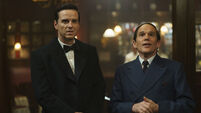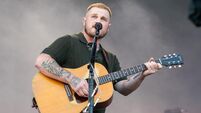Caoimhín Gaffney: 'I actually think Ireland is very supportive of artists such as myself'
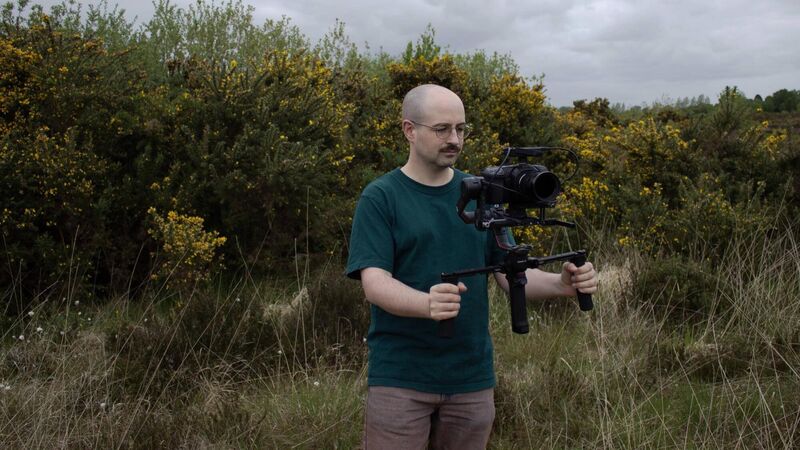
Caoimhín Gaffney pictured filming for some of the artworks that feature in the All At Once Collapsing Together exhibition in Skibbereen.
Caoimhín Gaffney has just moved back to Dublin city after an 18-month stay at their late grandfather’s farmhouse in Cavan, living close to nature while consumed in an artistic practice that includes film, photography and the written word.
Gaffney’s concern for the environment is reflected in the title of their exhibition — All At Once Collapsing Together — which has just opened at Uillinn: West Cork Arts Centre in Skibbereen.
“I was thinking obviously in terms of climate anxiety and the feeling of habitats collapsing,” says Gaffney who uses they/them pronouns.
“I’m not trying to provide answers. We know there's a biodiversity crisis, and our mental health is in crisis, so I’m trying to put these two things in conversation with each other.”
The exhibition, which ran at the Butler Gallery in Kilkenny and the Highlanes Gallery in Drogheda in 2024, features a two-screen film, a selection of photographs, and work in printed text and neon. The film, also called , was a major project. “I shot some of it on a residency in Buncrana, on the Inishowen peninsula in Donegal. I hiked with the performers to all these remote locations. More of it was shot on the farm in Cavan. There's a mixture of agricultural land and areas that are not being farmed at all.”
The film, shot on video, follows two characters as they engage with lakes and rivers, native birds and fauna in the landscape. There’s a voiceover, with one of the characters describing what Gaffney calls a tumultuous internal experience: "But it's not like a narrative film, where the character develops and they have a kind of growth, and then at the end you have a resolution.
"If anything, it's more like a series of little poems that join together to make a bigger idea. Parts of it are almost like a meditation. I want to leave enough space that the viewer can kind of fall into it.”
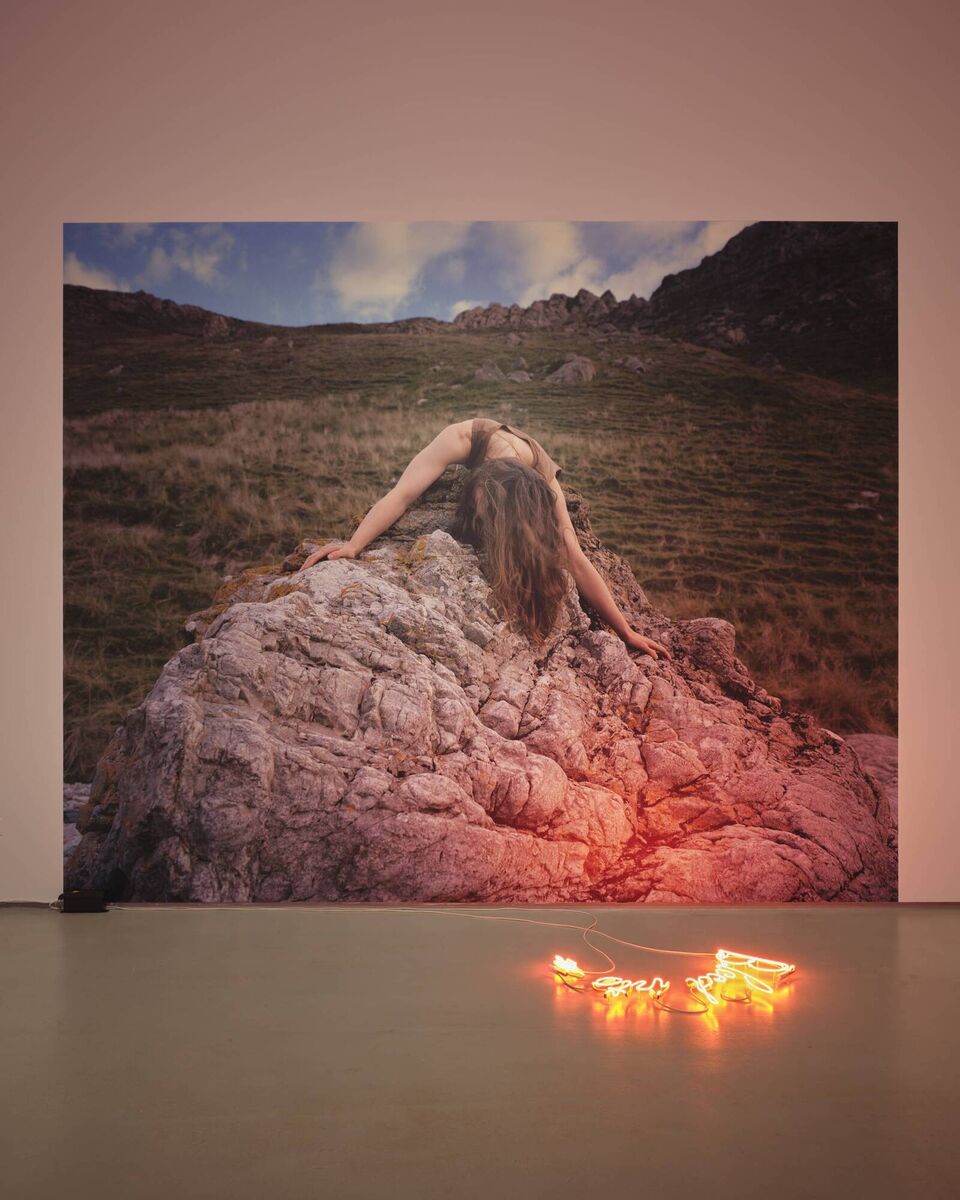
Gaffney used a medium format camera and analogue film to shoot the photographs in the show. “It's a much slower, and more manual, process than shooting on video. You have to wait for the light to change, so you can get the colours you want. I’ve tried to do both — the filming and photography — at the same time, but it doesn’t work. I've just accepted that they're totally different ways of doing things.”
Gaffney’s exhibition also features a recording of their short story, , which was shortlisted for the RTÉ Short Story Competition in 2023. The story describes a series of surreal events, when the lakes and bogs in Cavan begin rising uncontrollably, so that the local residents are eventually forced to get around in boats.
Gaffney was always interested in making work in different media. After completing a BA at Dublin Institute of Technology, they went on to study for an MA at the Royal College of Art in London. “That was the only MA programme I could find where I could do film and photography, side and side. They had a colour darkroom so you could print your own negatives, and they had proper cinema equipment. Accessing all of that was unreal. I was 22, so I think I was a bit too young to fully appreciate how lucky I was to be there, but I worked hard and did well in it.”
After working for some years, mostly as a teacher, Gaffney went on to complete a PhD at Ulster University’s School of Arts, Humanities and Social Sciences in 2022, saying: “No one in my family had ever done a PhD, and I was a bit hesitant to take it on."
“But a former lecturer from DIT encouraged me. I was very naïve about the commitment, which might have been a good thing, actually. But I had all the library resources and a stipend, which was as much as I’d been earning in a job before I started. And I was able to focus on my ideas for three years, so it was a great way to develop my practice.”
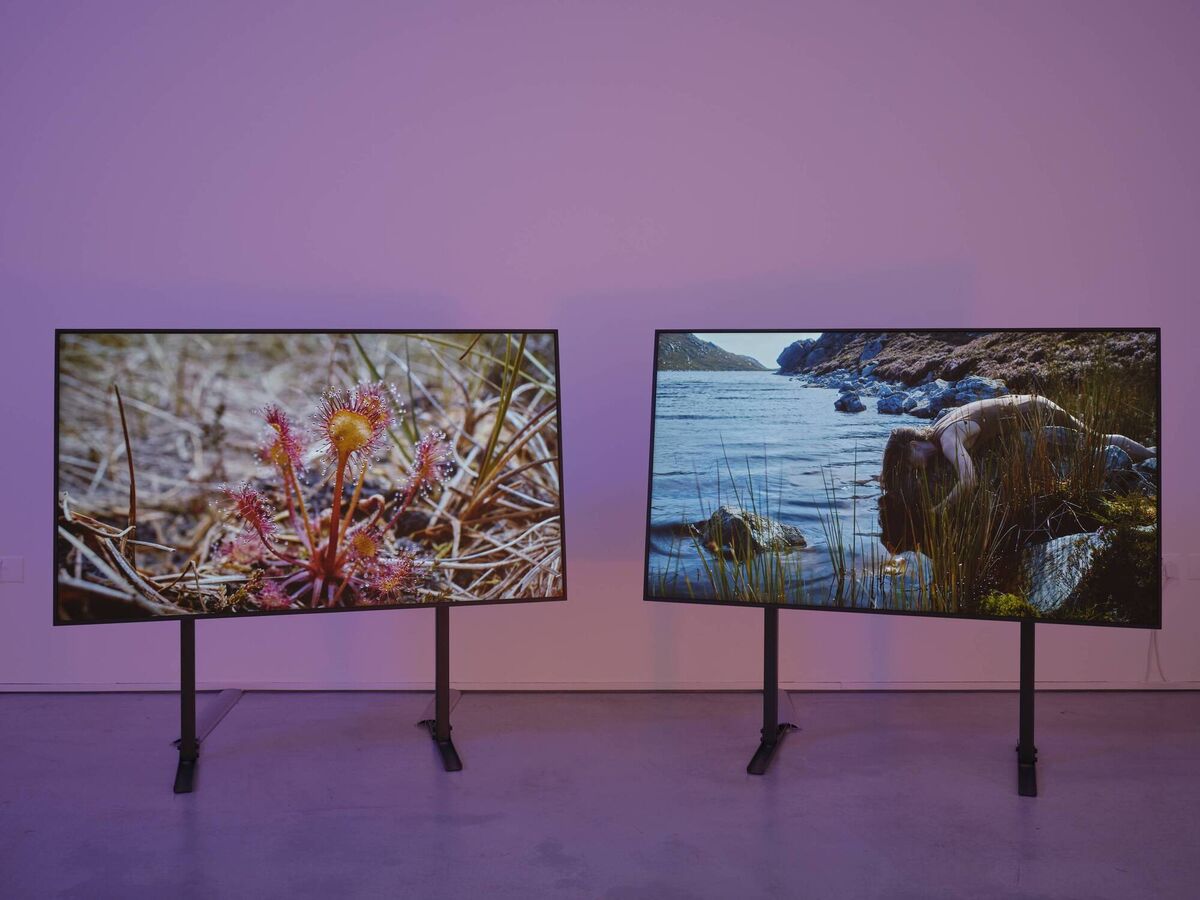
Making a living as an artist in Ireland can often be a challenge, but Gaffney is positive about the experience. “I've lived in the UK and Northern Ireland, and I've done residencies in other countries, and I actually think Ireland is very supportive of artists such as myself, making non-narrative films. My new film is funded by the Arts Council. I think they really understand how much people are doing with small budgets."
“Some of my films have sold to collections. One was acquired by the Crawford during the COVID pandemic. The Arts Council bought one of my films for their collection as well, and IMMA has another. But that doesn't happen all the time. It can be hard, but teaching has subsidised me when I’ve been in between projects.”
Gaffney has produced a book to complement the exhibition at Uillinn: “It’s not a catalogue, but more like an artwork in itself. Anna O'Sullivan from the Butler Gallery in Kilkenny wrote the introduction, and there's an essay by Pádraic E Moore, the director of the Ormston House Gallery in Limerick. It’s like taking stock of the project, showing it in a new way and hopefully giving it a final lease of life that will reach people that didn't make it to the exhibition. It should be out next month.”
Gaffney’s next film will extend to 40 minutes, longer than any they’ve made to date. “I'm thinking of this as another stepping stone, and then hopefully I’ll get to make a feature film.”
There are also plans for more creative writing: “I’d love to write a novel, but I think I need to make this film first, and not get distracted.”
Would they consider another spell at the farmhouse in Cavan? “I really like being back in Dublin, with my family and friends,” they say, “but that’s certainly an option.”
- runs at Uillinn: West Cork Arts Centre in Skibbereen until February 15. For further information, visit westcorkartscentre.com.



